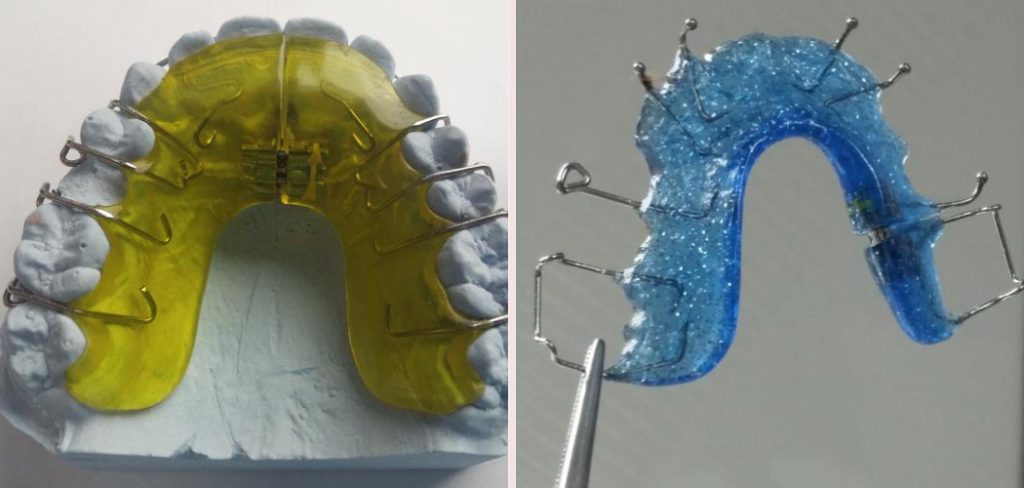When To Get Braces? Find Your Perfect Smile Time

The decision to get braces is a significant one, and timing plays a crucial role in the orthodontic treatment process. For many individuals, especially parents considering orthodontic care for their children, understanding when the best time to get braces is can be perplexing. The optimal time for orthodontic intervention depends on various factors, including age, the type of orthodontic issue, and the development stage of the dental and facial structure.
Orthodontists often recommend that children be evaluated by an orthodontist at the age of seven. At this stage, most children have a mix of baby and permanent teeth, which allows the orthodontist to assess the relationship of the upper and lower jaws and how the teeth are coming in. Early evaluation can help identify potential problems early on, such as crowding, open bites, overbites, or crossbites, and can often simplify or shorten treatment times when intervention is needed later.
For adolescents, the timing of orthodontic treatment can depend on the degree of development of their permanent teeth. Most orthodontic treatments begin once most of the permanent teeth are in, which is typically around the age of 11 to 14 for girls and 12 to 15 for boys. However, each child is different, and the exact timing can vary based on individual development. Early teenage years are a common time for braces because the bone and teeth are still developing, making it an ideal period for making adjustments.
Adults are also excellent candidates for orthodontic treatment, and with advancements in technology, there are now more discreet options available, such as clear aligners (Invisalign) and ceramic braces, which cater to aesthetic concerns. The decision to get braces as an adult can be influenced by factors such as the desire for improved aesthetics, the need to address dental health issues like gum disease or jaw pain that can be alleviated by proper teeth alignment, and the pursuit of overall well-being. Adult orthodontic treatment can be slightly longer due to the bones being fully formed, which might reduce the speed of tooth movement, but the end results can significantly enhance an individual’s quality of life.
The process of deciding when to get braces involves a thorough examination by an orthodontist, which typically includes a clinical examination, X-rays, and sometimes molds of the teeth. This assessment helps determine the best course of treatment and whether any preliminary steps, such as extracting teeth or using appliances to modify jaw growth, are necessary before braces are applied.
Innovations in orthodontic technology have expanded the scope of who can benefit from braces. For instance, the development of lingual braces, which are attached to the back of the teeth, offers a virtually invisible option for individuals who are concerned about the appearance of traditional braces. Similarly, advancements in clear aligner systems provide a removable and almost imperceptible method for straightening teeth, appealing to a broader demographic, including adults and teenagers seeking less noticeable solutions.
The journey to achieving the perfect smile is highly individualized and depends on various personal and orthodontic factors. Whether you’re a parent looking to ensure your child’s dental health and aesthetics or an adult seeking to improve your smile, understanding the timing and options available for orthodontic treatment is crucial. By consulting with an orthodontist, individuals can make informed decisions about when and how to proceed with braces, setting themselves up for a lifetime of confident smiles and improved dental health.
Step-by-Step Guide to Getting Braces

- Initial Consultation: Schedule a meeting with an orthodontist to discuss potential orthodontic issues and the best time for treatment.
- Examination and Diagnosis: The orthodontist will conduct a thorough examination, which may include X-rays and molds of your teeth, to determine the severity of any orthodontic problems.
- Treatment Planning: Based on the diagnosis, the orthodontist will outline the most appropriate treatment plan, including the type of braces or orthodontic appliance and the estimated duration of treatment.
- Treatment Initiation: Braces are applied or the first set of aligners are given, marking the beginning of the orthodontic treatment journey.
- Regular Adjustments: Periodic visits to the orthodontist for adjustments to the braces or to receive new sets of aligners are crucial for progressing the treatment as planned.
- Retention Phase: After the active orthodontic treatment is completed, a retainer is worn to maintain the new position of the teeth and prevent them from shifting back to their original positions.
In the realm of orthodontic care, understanding the nuances of timing and treatment options can make all the difference in achieving a successful outcome. By embracing the advances in orthodontic technology and collaborating closely with an orthodontic professional, individuals can embark on a personalized journey towards a healthier, more confident smile that lasts a lifetime.
Pros and Cons of Getting Braces at Different Ages

Children:
- Pros: Early intervention can simplify or shorten later treatments, address issues before they become more severe, and take advantage of the developmental stage for more effective adjustments.
- Cons: Some treatments might require a two-phase approach, with initial interventions followed by a second phase of treatment once all permanent teeth have erupted.
Teenagers:
- Pros: Most permanent teeth are in, allowing for comprehensive treatment plans; the bone is still malleable, making adjustments easier and potentially faster.
- Cons: Social and aesthetic concerns during a sensitive adolescent period; potential need for extractions or other preliminary treatments.
Adults:
- Pros: Aesthetically pleasing options like clear aligners and ceramic braces; ability to address long-standing issues that affect dental health and personal confidence.
- Cons: Treatment might be slightly longer due to less malleable bone; potential for more complex issues that have developed over time, such as gum disease or considerable tooth wear.
The path to a perfect smile is as unique as the individual seeking it. Through a combination of technological innovation, personalized care, and a deep understanding of orthodontic principles, achieving a healthy, beautiful smile that enhances one’s quality of life is within reach, regardless of age.
At what age should a child first visit an orthodontist?
+The American Association of Orthodontists recommends that children should first visit an orthodontist around the age of seven. This early evaluation allows for the detection of potential orthodontic issues and provides an opportunity to intervene early if necessary.
How long does orthodontic treatment typically last?
+The duration of orthodontic treatment can vary significantly depending on the complexity of the case and the type of treatment chosen. On average, most treatments last from one to three years, though this can be shorter or longer depending on individual circumstances.
Are adults too old for orthodontic treatment?
+No, adults are not too old for orthodontic treatment. With advancements in orthodontic technology, there are now more options available than ever for adults, including clear aligners and ceramic braces. Adults can achieve significant improvements in the alignment of their teeth and enhancement of their smile.
Do I need to see a dentist before visiting an orthodontist?
+While it's not strictly necessary to see a dentist before an orthodontist, maintaining regular dental check-ups is important for your overall oral health. Your dentist may refer you to an orthodontist if they identify any orthodontic issues. However, you can also directly schedule a consultation with an orthodontist if you're concerned about the alignment of your teeth or your child's teeth.
Will I need to avoid certain foods during orthodontic treatment?
+Yes, during orthodontic treatment, especially with traditional braces, it's recommended to avoid certain foods that can damage the braces or make them more difficult to clean. These typically include hard, sticky, or crunchy foods. Your orthodontist will provide you with a list of foods to avoid and offer advice on how to maintain good oral hygiene throughout your treatment.
Embracing the journey towards a perfect smile, whether as a child, teenager, or adult, is a personal and rewarding experience that combines modern orthodontic techniques with personalized care. By understanding the intricacies of timing and the array of treatment options available, individuals can make informed decisions about their orthodontic care, setting the stage for a lifetime of healthy, confident smiles.

